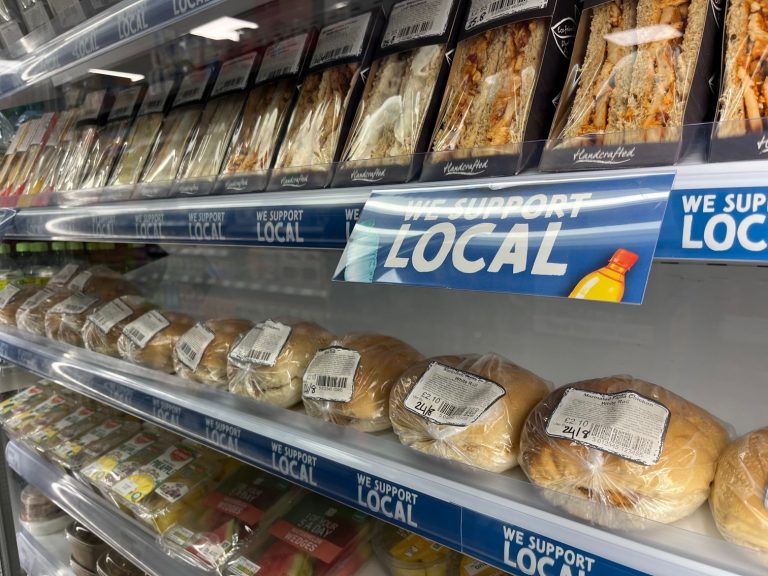The latest ACS Local Shop Report has shown a convenience sector in fine health, with growth of multiple convenience stores not denting the success of independently-owned stores.
by Kevin Scott
In just three short years the ACS Local Shop Report has become one of the most insightful research papers into the convenience industry in the UK. Over the next couple of issues of SLR we’re going to be delving into the findings of the report and analysing what it reveals about the convenience sector in Scotland. The results show a sector with enormous potential.
First off, let’s look at the numbers. There are, according to the report, 5,545 stores in Scotland – which is a net gain of nine stores from last year. Within those stores 42,255 people work, which is an increase of 1.55%, or 649 people – which given the relatively static number of stores would indicate that owners are taking on more staff – possibly due to demand, or possibly due to spreading hours among more staff due to issues such as the national minimum wage.
One thing of note is that Scotland has one convenience store for every 958 people, which sees it knocked off the top spot by Wales, which now has one store for every 955 people.
Shop sizes are taken on a UK-wide basis, but given the similarities between the constituent parts of the country, it’s an accurate measure of how the sector is made up. The ACS splits shops into multiples and independents. The former includes supermarket chains’ convenience stores and co-operatives. 24% of multiples are 0-999 sq ft in size, compared with 40% between 1,000-1,999 sq ft, with 36% 2,000-3000. Stores over this size, of which there are a growing number in the sector, have not been included in the report – which itself is an interesting point to note.
Two-thirds of the convenience estate is owned, while a third is rented, meaning that the majority of stores are in the hands of their owners. As you can see from Figure 2., 77% of stores are classified as being ‘small businesses’ with 23% being ‘multiple chains and co-operatives’. 37% of the total number of shops are non-affiliated independents, while 34% are independent symbol groups (with another 2% being multiple symbol groups – such as company owned stores). Forecourts make up a health 8% of small businesses, and 9% of multiples. Despite the share of the market value that they command, multiples have only 7% of the shops. For convenience retailers then, there is much work to be done in increasingly the basket spend of shoppers. We know that customers are becoming more content in doing ‘basket’ shops in multiple convenience formats, so why not in their local independent?
Moving onto sales and according to the report, convenience sales topped £37.4bn in 2013, around 20% of the entire grocery market. The sector showed strong growth of +5.2%, though it is noted that independent shops tend to be smaller in both size and turnover.
A fascinating picture emerges when we look at how the number of shops in each sector sits relative to their overall value. It is here that we can see how destructive multiple convenience outlets are for independents. With just 3,771 stores, multiples pull in £7.3bn in sales. Compare that with the 18,630 non-affiliated independents, who bring in a combined £6.5bn. If you look at that on a per store basis, the average for a multiple is just north of £1.93m, while for an unaffiliated independent, that number is just £348,000.
What this tells us is that people are far more content to spend money in a multiple convenience. This may, on the surface, indicate that independents have much to fear from multiple convenience, but this may not necessarily be the case.
Symbol stores bring in more than double the revenue of multiples, though granted this is with 4.5x the number of shops. There are 17,080 symbol stores bringing in a total of £15.5bn, an average of £907,494.
Looking at how this compares with last year and it seems there is nothing to stem the flow of spend into multiple convenience, but it is where this spend comes from that is interesting. Within symbols, stores numbers are actually on the up – with 330 more stores than last year across the UK.
Sale too are up, by £700,000. Unaffiliated stores have decreased in number by around 200 and sales are static. Almost 500 new multiple convenience stores have opened, 1.4 per day. Revenue in a year has grown by £1bn – so even if we include a nominal rise in food prices and population, this would reinforce the migration from supermarket to convenience format. Going back to the perceived threat of multiple convenience stores, this £1bn moving into convenience is not being taken from the tills of corner shops. It could be argued that by increasing the number of multiple convenience outlets, it is normalising weekly shopping in smaller stores. Little and Often is a phrase often repeated these days, and the figures from the report back this up.
For local retailers, this is good news. If customers become more accustomed to picking up more than the odd treat or essential purchase, then they will increase their basket spend and the frequency of their visits, and if more customers do this, then the two key pillars of growth will have been met. The future, for convenience, continues to look bright.
Next month we’ll be taking a look at other aspects of the report, such as which categories are showing strongest growth, the increasing role of technology and importantly, the demographics of customers.







